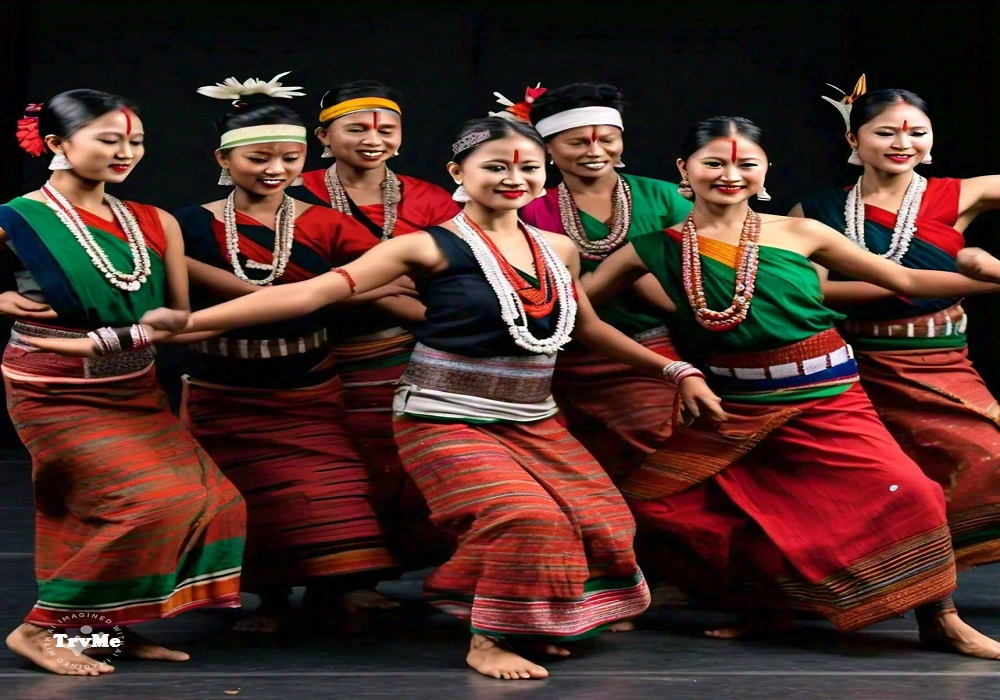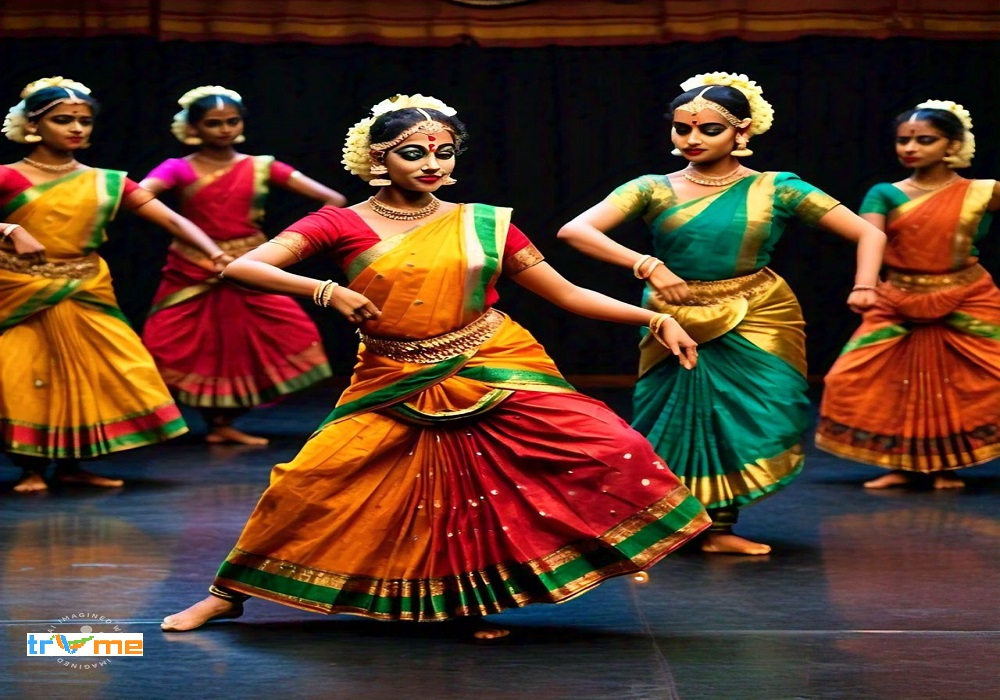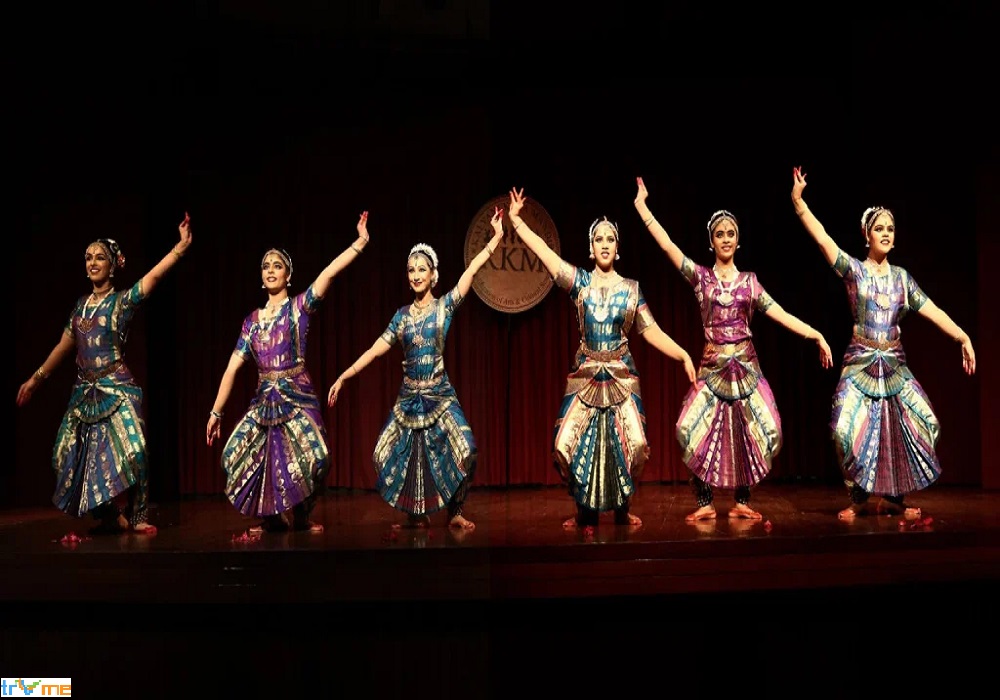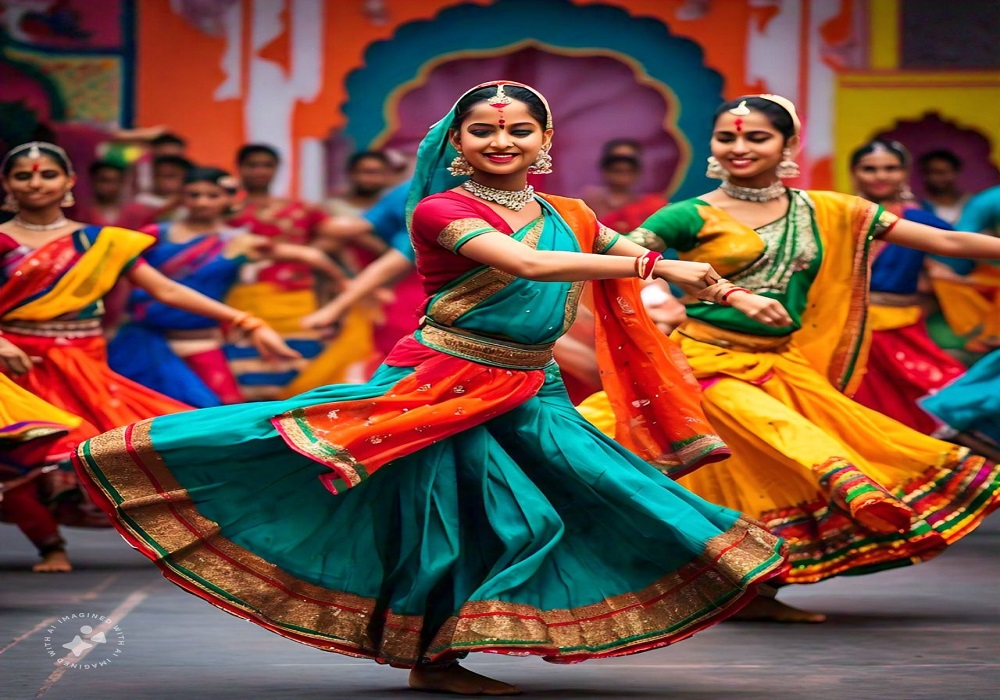Nagaland Folk Dance Troupe

Published: 30 Jul 2024 • Last Updated: 30 Jul 2024
Nagaland Folk Dance Troupe
Nagaland, a small yet vibrant state located in Northeast India, is known for its rich cultural heritage and diverse tribal communities. The cultural tapestry of Nagaland is beautifully expressed through its myriad dance forms, each of which is a reflection of the region's history, traditions, and the unique lifestyle of its people. Dance in Nagaland is not merely a form of entertainment; it is a medium through which the Naga people express their emotions, stories, and celebrate significant events in their lives.[[tour:
This article delves into the various dance forms of Nagaland, exploring their cultural significance, the occasions on which they are performed, the costumes worn, and the props used. We will also discuss the role of Nagaland Dance Troupe Providers and how they contribute to preserving and promoting these dance forms across the globe.
An Overview of Dance Forms in Nagaland
Nagaland's dance forms can be broadly classified into three categories:
- Folk Dances
- Tribal Dances
- Classical Dances
Each category encompasses various dance styles that have evolved over the years, enriched by the cultural practices of the 16 major tribes and numerous sub-tribes residing in Nagaland.
1. Folk Dances of Nagaland
Folk dances in Nagaland are community dances performed during festivals, celebrations, and significant life events. These dances are characterized by their rhythmic movements, vibrant costumes, and the use of traditional music and instruments. Folk dances often involve the entire community, symbolizing unity and collective joy.
a. War Dance (Ogrei or Opottun)
- Occasion: The War Dance, also known as Ogrei or Opottun, is performed by the Konyak tribe of Nagaland. Traditionally, it was a dance of valor performed to celebrate victories in battle. Today, it is showcased during major festivals like Aoleang, a festival marking the arrival of spring.
- Costume: The dancers wear traditional warrior attire, which includes feathered headgears, intricately designed waistbands, and shields. The color palette is dominated by black, red, and white, symbolizing power, bravery, and peace, respectively.
- Props Used: Spears, shields, and traditional swords are used to mimic battle scenes and represent the martial prowess of the Konyak warriors. The rhythm of the dance is maintained with the beats of log drums and the chanting of war cries.
b. Zeliang Dance
- Occasion: The Zeliang Dance is performed by the Zeliang tribe during the annual Sekrenyi festival, a celebration of purification and renewal. It is a vibrant and joyful dance that involves intricate footwork and synchronized movements.
- Costume: The dancers adorn themselves with traditional shawls, bead necklaces, and feathered headgear. The color scheme often includes bright reds, greens, and blues, representing prosperity and happiness.
- Props Used: No specific props are used, but the dancers form circles and lines, clapping and singing traditional songs to enhance the festive atmosphere.
c. Khamba Lim
- Occasion: This dance is performed by the Ao tribe during the Moatsu Festival, which marks the end of the sowing season. The Khamba Lim dance is a form of thanksgiving and prayer for a bountiful harvest.
- Costume: Dancers wear colorful traditional attire, including embroidered shawls and headgear decorated with cowrie shells and beads. The dominant colors are red and yellow, symbolizing fertility and abundance.
- Props Used: The dance involves the use of bamboo sticks, which the dancers rhythmically tap on the ground as they move in coordinated patterns.
2. Tribal Dances of Nagaland
Tribal dances are deeply rooted in the customs and beliefs of each tribe. They serve as a medium to convey stories, folklore, and the tribe's connection with nature and spirituality. These dances are performed during significant cultural and religious events.
a. Chang Lo (Sua Lua)
- Occasion: Chang Lo, also known as Sua Lua, is a dance performed by the Chang tribe during the Naknyulem festival, which celebrates good health and prosperity.
- Costume: The dancers wear traditional Chang attire, which includes shawls, loincloths, and intricate jewelry. The color palette is dominated by earthy tones such as brown, green, and yellow.
- Props Used: The dance often incorporates traditional musical instruments like bamboo flutes and drums to create a lively atmosphere.
b. Sumi War Dance (Amino)
- Occasion: The Sumi War Dance, known as Amino, is performed by the Sumi tribe during the Tuluni festival, a celebration of community unity and good harvest.
- Costume: The dancers wear warrior attire, including helmets adorned with animal horns, body paint, and elaborate beadwork. The color scheme is primarily black and white, representing strength and purity.
- Props Used: Spears, shields, and machetes are used to depict scenes of battle and bravery, accompanied by the beat of log drums and chants.
c. Angami Dance
- Occasion: The Angami Dance is performed by the Angami tribe during the Sekrenyi festival, which signifies the purification of the community and the welcoming of a prosperous new year.
- Costume: Dancers wear traditional Angami shawls, feathered headgear, and waistbands decorated with shells and beads. The colors are typically red, black, and white, symbolizing the tribe's connection with their ancestors and nature.
- Props Used: The dance involves the use of spears and shields, symbolizing the tribe's historical significance and martial heritage.
d. Rengma Dance
- Occasion: The Rengma Dance is performed by the Rengma tribe during the Ngada festival, which marks the end of the agricultural year and is a time for thanksgiving and feasting.
- Costume: The dancers wear traditional Rengma attire, including shawls, headdresses, and jewelry made from seeds and beads. The color palette includes vibrant reds, blues, and yellows, symbolizing prosperity and happiness.
- Props Used: Bamboo sticks and wooden shields are used in the dance, accompanied by the rhythmic beats of drums and the melody of bamboo flutes.
e. Pochury Nazu
- Occasion: Pochury Nazu is performed by the Pochury tribe during the Nazu festival, which celebrates the tribe's agricultural heritage and the bounty of the harvest season.
- Costume: Dancers wear traditional Pochury garments, including shawls, necklaces, and feathered headgear. The colors are predominantly red and white, symbolizing purity and celebration.
- Props Used: The dance involves the use of bamboo sticks and traditional musical instruments to create a lively and celebratory atmosphere.
3. Classical Dances of Nagaland
While Nagaland is predominantly known for its folk and tribal dances, classical dance forms have also found a place in the cultural landscape of the region. These classical dances are often taught and performed by trained dancers from various dance institutes and academies in Nagaland.
a. Naga Classical Dance
- Occasion: Naga Classical Dance is a contemporary dance form that draws inspiration from traditional Naga movements and classical Indian dance techniques. It is often performed during cultural festivals and state events.
- Costume: Dancers wear traditional Naga attire combined with classical dance costumes, including silk garments, jewelry, and headgear. The colors are typically rich and vibrant, representing the fusion of tradition and modernity.
- Props Used: Traditional musical instruments such as bamboo flutes, drums, and cymbals are used to accompany the dance, creating a harmonious blend of rhythm and movement.
b. Bamboo Dance (Cheraw Dance)
- Occasion: While not originally from Nagaland, the Bamboo Dance, also known as Cheraw Dance, has gained popularity in the region and is performed during cultural festivals and community celebrations.
- Costume: Dancers wear traditional Naga attire, including shawls and headgear, adorned with vibrant colors like red, green, and yellow, symbolizing joy and festivity.
- Props Used: The dance involves the use of bamboo poles, which are rhythmically clapped together by performers as dancers move in intricate patterns between them. The sound of the bamboo poles creates a lively and captivating rhythm.
The Role of Nagaland Dance Troupe Providers
Nagaland Dance Troupe Providers play a crucial role in preserving and promoting the diverse dance forms of Nagaland. These providers consist of dance groups, cultural organizations, and institutes that are dedicated to nurturing talent, conducting performances, and spreading awareness about Naga dance traditions. Let's explore the various aspects of their contributions:
Nagaland Dance Troupe Providers: Nurturing Talent
- Dance Training and Education
- Nagaland Dance Troupe Providers offer training programs and workshops for aspiring dancers, helping them develop their skills and understanding of traditional Naga dance forms. These programs cover a range of dance styles, from folk and tribal dances to contemporary interpretations.
- Dance institutes in Nagaland play a pivotal role in providing structured education and training, ensuring that the rich cultural heritage of the region is passed down to future generations. These institutes often collaborate with experienced dancers and choreographers to provide comprehensive training to students.
- Cultural Exchange Programs
- Many dance troupe providers organize cultural exchange programs, allowing dancers to showcase their talent and
learn from other cultural traditions. These programs foster cross-cultural understanding and help in promoting Naga dance forms on a global platform.
- By participating in national and international dance festivals, Naga dance troupes gain exposure and recognition, contributing to the global appreciation of Nagaland's unique dance heritage.
Promoting Naga Dance Forms: Performances and Events
- Local and Regional Performances
- Nagaland Dance Troupe Providers regularly organize performances at local and regional events, such as festivals, cultural fairs, and community gatherings. These performances provide an opportunity for dancers to connect with their audience and share the beauty of Naga dance forms.
- By showcasing traditional dances at these events, the providers contribute to the preservation and celebration of Naga cultural identity, ensuring that the rich traditions of Nagaland continue to thrive.
- National and International Events
- Naga dance troupes often participate in national and international cultural festivals, representing Nagaland's vibrant dance heritage on a larger stage. These events allow dancers to engage with diverse audiences and promote cultural understanding and appreciation.
- The participation of Naga dance troupes in international events also serves as a platform for promoting Nagaland as a destination for cultural tourism, attracting visitors interested in exploring the region's rich cultural heritage.
Preserving Naga Dance Traditions: Documentation and Research
- Cultural Documentation
- Nagaland Dance Troupe Providers are actively involved in documenting traditional dance forms, preserving valuable knowledge about the history, techniques, and significance of each dance style. This documentation serves as a valuable resource for researchers, scholars, and future generations interested in studying Naga dance traditions.
- Through the publication of books, articles, and multimedia content, these providers contribute to the dissemination of information about Naga dance forms, raising awareness and appreciation for the cultural diversity of Nagaland.
- Research and Innovation
- Dance troupe providers often engage in research and innovation, exploring new ways to incorporate traditional dance elements into contemporary performances. This fusion of traditional and modern techniques helps in keeping Naga dance forms relevant and appealing to modern audiences.
- By encouraging creativity and experimentation, these providers contribute to the evolution of Naga dance forms, ensuring that they remain dynamic and adaptable to changing cultural contexts.
Conclusion: Why Choose TrvMe as a Dance Group Provider in Nagaland?
When it comes to experiencing the vibrant and diverse dance culture of Nagaland, TrvMe stands out as a premier Nagaland Dance Troupe Provider. With a commitment to preserving and promoting Naga dance traditions, TrvMe offers a range of services that cater to cultural enthusiasts, event organizers, and tourists alike.
- Expertise in Traditional Dance Forms: TrvMe boasts a team of skilled dancers and choreographers who are well-versed in the rich tapestry of Naga dance forms. From folk and tribal dances to contemporary interpretations, TrvMe provides authentic and captivating performances that showcase the cultural heritage of Nagaland.
- Customized Cultural Experiences: TrvMe offers tailored cultural experiences for events, festivals, and gatherings, ensuring that each performance is unique and memorable. Whether it's a traditional festival or a corporate event, TrvMe delivers exceptional performances that captivate audiences and leave a lasting impression.
- Commitment to Cultural Preservation: As a leading dance group provider, TrvMe is dedicated to preserving and promoting Naga dance traditions. Through training programs, workshops, and cultural exchange initiatives, TrvMe plays a vital role in nurturing talent and ensuring that the rich dance heritage of Nagaland continues to thrive.
the Nagaland Dance Troupe represents a celebration of tradition, culture, and artistry. Through its diverse dance forms, Nagaland showcases the vibrant cultural tapestry of its tribal communities, offering a glimpse into the rich heritage of the region. With the support of dance troupe providers like TrvMe, the beauty and significance of Naga dance forms continue to be cherished and celebrated both locally and globally.



